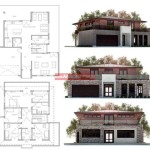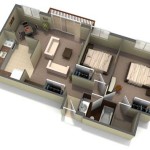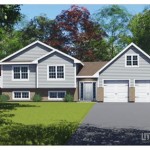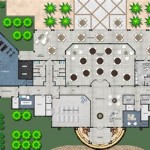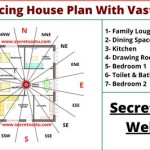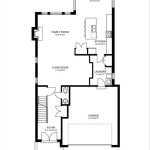Plan House Layout: A Comprehensive Guide for Optimal Home Design
When it comes to building or renovating a house, designing the layout is paramount. A well-thought-out plan not only enhances the functionality of your home but also creates a comfortable and inviting living environment. In this article, we will provide a comprehensive guide to help you tackle the process of planning your house layout like a pro. ### 1. Define Your Needs and Preferences: Before you begin sketching the layout, take time to reflect on your family's needs and preferences. Consider the following questions: - How many bedrooms and bathrooms do you require? - Do you frequently host guests or have extended family staying over? - Are there specific rooms you must include, such as a home office or a dedicated playroom? - What are your lifestyle habits? Do you enjoy cooking, entertaining, or spending time outdoors? Understanding your needs will help you allocate space accordingly and create a layout that aligns with your lifestyle. ### 2. Study the Plot and Surrounding: If you are building a new home, take the time to study the plot's orientation, size, and unique features. Consider aspects such as sun exposure, prevailing winds, and natural views. Understanding the plot's characteristics will help you position rooms strategically and maximize natural light and ventilation. ### 3. Establish the Main Zones: Divide your house into distinct zones based on their functions: -Living Zone:
This includes the living room, dining room, and kitchen. Design these spaces to flow seamlessly into each other, creating a cohesive and inviting atmosphere for family gatherings and entertaining. -Private Zone:
This includes bedrooms and bathrooms. Position these rooms away from the main living areas to ensure privacy and tranquility. -Service Zone:
This includes the laundry room, garage, and storage areas. Place these spaces strategically to minimize disruption to the main living areas. ### 4. Consider the Flow of Movement: Pay attention to the flow of movement between rooms. Create a layout that allows for easy movement and minimizes unnecessary steps. Avoid creating long, narrow hallways that break up the space and hinder accessibility. ### 5. Design the Kitchen: The kitchen is often considered the heart of the home. Design it to be functional and efficient. Consider a U-shaped or L-shaped layout to create a work triangle between the sink, stove, and refrigerator. Ensure adequate counter space and storage to facilitate meal preparation and organization. ### 6. Plan the Living and Dining Areas: Create a spacious and inviting living area where family and friends can gather comfortably. Position the furniture in a way that promotes conversation and allows for multiple seating arrangements. The dining area should be adjacent to the kitchen and large enough to accommodate your desired dining arrangement. ### 7. Create Comfortable Bedrooms: Design bedrooms to provide privacy, comfort, and adequate storage. Consider the size of the beds and other furniture to ensure ample circulation space. Incorporate built-in storage solutions, such as wardrobes and drawers, to maximize space utilization. ### 8. Add Functional Bathrooms: Bathrooms should be well-organized and functional. Separate the toilet and shower areas to allow for simultaneous use. Choose fixtures and finishes that are easy to clean and maintain. Consider adding a linen closet or storage space for toiletries and towels. ### 9. Incorporate Outdoor Spaces: If your plot allows, create outdoor living spaces such as a patio, deck, or garden. These spaces extend the living area and provide opportunities for relaxation and entertainment. Consider the orientation of these spaces to take advantage of natural light and shade. ### 10. Seek Professional Advice: If you feel overwhelmed by the task of planning your house layout, don't hesitate to seek professional help from architects or interior designers. These professionals can provide valuable insights, help you optimize space, and create a layout that meets your specific needs and preferences. By following these steps and considering the various aspects of house layout design, you can create a home that is not only functional and comfortable but also reflects your unique style and personality.
House Plans How To Design Your Home Plan

House Plans How To Design Your Home Plan

Small House Plans Popular Designs Layouts

House Plans How To Design Your Home Plan

Small House Design Shd 2024007 Pinoy Eplans One Y Bungalow Plans Floor

Small House Design 2024001 Pinoy Eplans Floor Plans

3 Bedroom House Plans Your Guide To Perfect Home Design

Create House Plans Design And Layout For Your

Floor Plan Creator And Designer Free Easy App

Small House Design Series Shd 2024008 Pinoy Eplans

